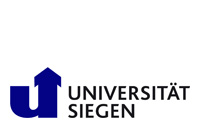
News
You are here
Przemysław Łagodzin´ski, University of Economics in Katowice
Date: 15/07/2016
Time: 14:15
Room: H-F 114
Colorization is a computerized process for adding color to black and white pictures, movies or TV programs. Since changes in color are more easily perceived than changes of intensity, therefore this
procedure makes the interpretation and understanding of images easier. During colorization process a scalar value representing pixel’s intensity is being replaced by a vector in a given color space. Since the
mapping between intensity and color has no inherently correct solution, human interaction and external information usually plays a large role.
A novel colorization scheme that takes advantage of the modified morphological distance transform to propagate the color, scribbled by a user on the grayscale image has been proposed. In this colorization
method, the topological distance values are computed for each image pixel of the scibbled image, describing its distance to the inserted color markers. These values are then complemented with the structural information and luminance changes derived from the original grayscale image. The distances are then used along with gradient based features to reproduce original image structures while propagating the new colors obtained during the additive color blending process.
Extensive experiments performed on various kinds of natural images demonstrated the effectiveness of the proposed colorization method. They also showed that the main advantage of the presented algorithm is its computational speed and ability to produce visually pleasing colorization results promptly after providing the color information.

